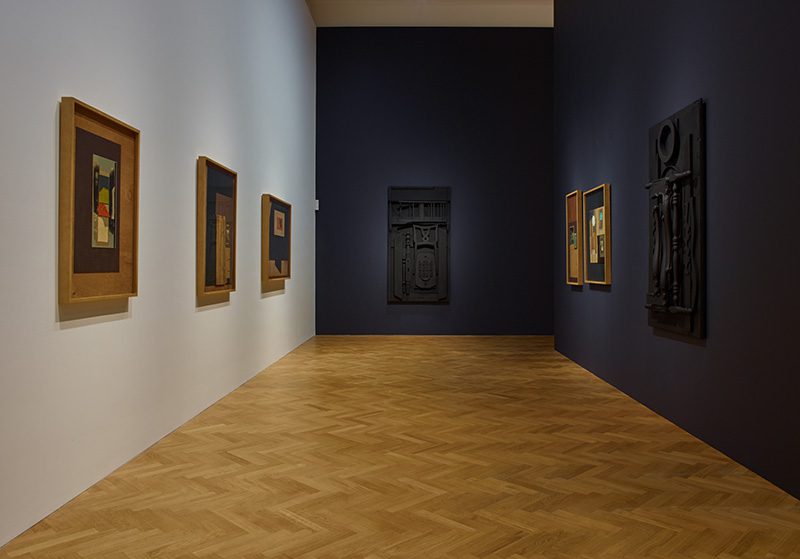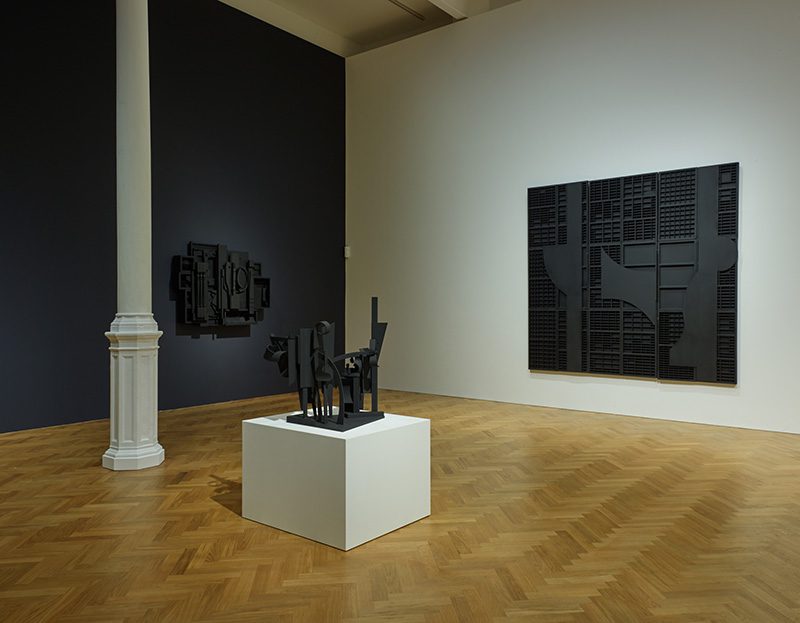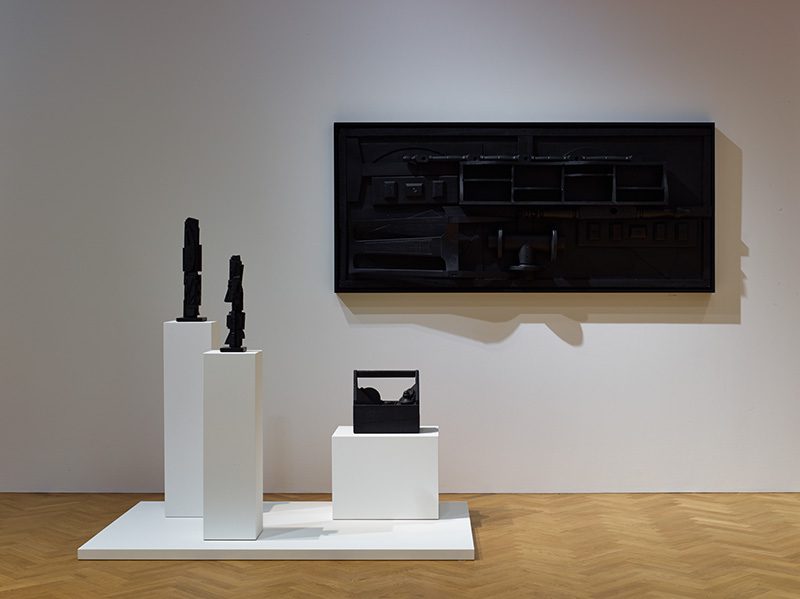ART CITIES:London-Louise Nevelson
 Louise Nevelson was an iconoclast artist known for her monochromatic abstract expressionist sculptures, she is fundamental to the history of Feminist art, as it challenged the dominant stereotype of the male sculptor. She emerged in the art world amidst the dominance of the Abstract Expressionist movement. In her most iconic works, she utilized wooden objects that she gathered from urban debris piles to create her monumental installations. Nevelson carefully arranged the objects in order to historicize the debris within the new, narrative context of her wall sculptures.
Louise Nevelson was an iconoclast artist known for her monochromatic abstract expressionist sculptures, she is fundamental to the history of Feminist art, as it challenged the dominant stereotype of the male sculptor. She emerged in the art world amidst the dominance of the Abstract Expressionist movement. In her most iconic works, she utilized wooden objects that she gathered from urban debris piles to create her monumental installations. Nevelson carefully arranged the objects in order to historicize the debris within the new, narrative context of her wall sculptures.
By Dimitris Lempesis
Photo: Pace Gallery Archive
An exhibition with works by Louise Nevelson is on view at Pace Gallery in London, presenting works from the mid-‘50s until her death in 1988. The artist was born in Kiev, in 1905, she moved with her family from Ukraine to Rockland, Maine. In 1929 she began studying with Kenneth Hayes Miller at the Art Students League in New York City, and in 1931 she studied with Hans Hofmann in Munich. In 1932, when Hofmann immigrated to America to escape the political tension in Germany, she returned to New York. Nevelson’s first individual exhibition was held in New York City at the Nierendorf Gallery in 1941. After enduring years of poverty and critical neglect, Nevelson by the ‘50s had both developed her mature sculptural style and begun to earn significant critical recognition. By that time she was working almost exclusively with abstract forms. Nevelson created her first assemblages in the mid ‘50s, and quickly made an impact in the New York art scene with her pioneering approach to sculpture. Inspired by Cubism, Nevelson took scraps of wood and other materials found on the street near her studio and assembled them into free-standing and wall-mounted sculpture that she would paint a solid colour-most famously, black or white. In 1967, the Whitney Museum of American Art hosted her first museum retrospective and exhibited over 100 of her works spanning her entire oeuvre. Two years later, already in her 70s, she received her first commission for a monumental outdoor sculpture from Princeton University, which she fulfilled in 1971. Also are on presentation early collages, produced at a smaller size than most of her sculptures, provide important insight into her thinking and working process and the importance of wood in her work. Mostly unpainted, the collages reveal Nevelson’s use of raw materials, demonstrating an organisational logic that continues in her larger work as well. In addition to Nevelson’s iconic black monochrome sculptures, the exhibition also includes steel maquettes Nevelson produced for public sculptures, now exhibited in Chicago and at Harvard University.
Info: Pace London, 6 Burlington Gardens, London, Duration: 7/6-16/7/16, Days & Hours: Tue-Sat 10:00-18:00, www.pacegallery.com


